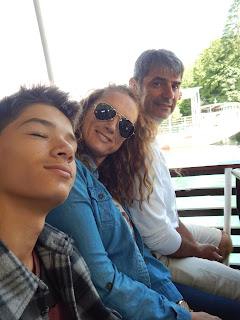Reading Notes- Congo Unit- Parts A&B
Reading Notes- Congo
Unit- Part A
I knew that the stories from the Congo unit would be a
little different from the stories from West Africa, which I did for a previous
unit, but I really could not have guessed just HOW different they are from one
another. The re-telling style was entirely different in my opinion. The stories
from West Africa are usually very brief, they introduce the plot quickly, and
reveal the plan or resolution even quicker. I think it may have a lot to do
with translation, but these stories are much more drawn out, and the same event
might occur two or more times, with negative endings, until they finally reach
the positive outcome. For example, in the story "How the Gazelle Got Married",
the same character forgot his mission five times, and the process happened six
times (yes I counted). That’s fairly repetitive for a story of only 900 words.
So it got me thinking on my own experience with African Folktales. The reason I
picked African tales for my story was because I fell in love with the idea of
them while I was there. But then I remembered, when one sat down to listen to
these stories, you could expect to be there for a good amount of time. It
really is just apart of the oral tradition for these stories to be very long.
Usually with many characters, many different settings, and many side stories
that (eventually) lead back to the main idea. When I realized this, the style
of the stories began to make more sense. We can not even compare the Congo Unit
to the West African Unit, as their stories live to serve totally different
purposes. The West African stories are meant for quick, comedic entertainment.
The Congo stories can be more compared to longer children’s books read at
bedtime, they are entertaining, not that serious, and serve to just tell a
story.
Reading Notes- Congo
Unit- Part B
Bibliography: R.E. Dennet, Notes on the Folklore of the Fjort, Congo Unit



Comments
Post a Comment